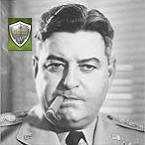ORIGINAL: ColinWright
If by this you mean that in hot-seat matches with yourself, the forces wind up about where they did historically, that's not good enough.
Multiple hot-seat matches with myself, the PO, PO vs. PO, and useage in a TOAW tournament. And it performs far better than just matching the end positions. Multiple waypoints are met (given historical command choices), losses are realistic, and the historical choices of the commanders tend to be well justified for the historical reasons. The scenario speaks for itself. The AAR I posted speaks for itself. Of course, you can't even be bothered to read the AAR, much less play the scenario. As I've said before, total ignorance is not a very lofty vantage point.
No...not really. If we assume Norm's density factors are correct, then where he (and probably the historical combatants) could jam in four regiments, if you try it, the density light will go off and you'll pay dearly for it. What one will get is a system where the historical density of troops simply cannot be put on the line -- assuming one doesn't want to get creamed, that is.
How dearly depends upon both the density
and the Attrition Divider. Since the AD was set based upon trial runs, only the relative density matters. That's correct, provided both sides are designed to the same standard. They were.
Should we apply the same logic to the French campaign of 1940? By the end of the campaign, over two million Frenchmen were casualties 'of one sort or other.' Ergo, everybody fought. Fact of the matter is, rear echelon elements can surrender. They can even fight ineffectually. They'll become casualties of 'one sort or another.' It doesn't follow that they were fighting usefully in the majority of engagements their parent formations were engaged in.
Normandy wasn't remotely like that. The French Army as a whole surrendered in 1940. There weren't even many real pockets formed in Normandy. It's safe to assume the vast majority of Germans were being engaged in action.
No...it would be nice if you could selectively include them. However, you can't. Therefore, you don't 'need to include them.' You need to decide which leads to a better simulation -- including them and having them fight in all battles (and drive up the density past what Norm intended), or not including them and have them not fight ever.
If they fought then they need to be included, same as the 15th Army - for the reasons I've listed. It was a desperate situation, and the breakout will be wild.
I also note that you didn't address my query about why it is appropriate to include Allied rear-echelon elements when it is quite improbable that they would have fought under any circumstances likely to arise in your scenario.
Of course I did. The forces have to be designed to the same standard. If the Germans are designed to one and the Allies to another, nothing will work right. The Germans will have counteroffensive abilities beyond their historical means. This will especially threaten the Allies while they are attempting to establish a lodgement in the early turns. And that threat will last far longer than historically. The Germans wanted to drive the Allies into the sea. It never developed for the good reason that each Allied division's 4,000-5,000 frontline elements had another 12,000-14,000 men behind them that would have had to have been destroyed too, if the counteroffensive was to succeed.
Nor have I conceded that the Allied rear-area elements were never engaged. For such a condition to be true, 100% of all Allied losses must have been suffered by the frontline elements only. Being in the Allied rear should have been as safe as being state-side. Yet we know that at least one American Lt. Gen was killed.
You asserted a while back that this had to be done because German rear-echelon elements were always fighting...
?? When?
... -- but this seems to be going at it the wrong way. Having included rear-echelon elements from one side because they sometimes fought, you find yourself including them from the other side even though they never fought.
It seems fairly obvious that simulation would be better served if the rear-echelon elements from neither side were included. Perhaps up the German rifle squad replacement rates.
Here we go again. The theory trumps the evidence. I've actually built the scenario, tested it extensively, while you've done nothing more than a thought experiment - but you're the expert.





